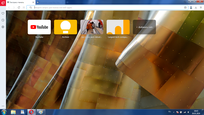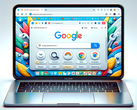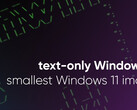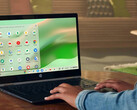Eternity is when something lasts infinitely, with no changes to it as years go by, and it was exactly this gift that owners of PCs running Windows 7 were treated to in 2020 when Microsoft stopped releasing updates for the OS. (Technically, those paying a pretty penny for extended support would continue to receive updates for a year or two more.)
With no annoying and seemingly useless updates to disrupt the user's workflow, said user could finally sleep with a clear head knowing the OS they had fallen in love with so many years ago would stay exactly the same tomorrow and the day after tomorrow and so on.
With January 2020 a full four years behind us, let's see if employing a Windows 7 PC to get day-to-day things done still makes sense. This little experiment lasted for 20 days and the results are in.
- Test system: Acer Aspire V5-131 (Intel Celeron 1007U - 2 Ivy Bridge cores running at 1.5 GHz, 8 GB of dual-channel DDR3-1600 RAM, a 250 GB SATA III Samsung SSD running at SATA II speeds)
Web browsing | No issues whatsoever
Windows 7 users can access any website they could possibly want to. Vivaldi 5.6, Firefox 115, Opera 95 and Chrome 109 all load Web pages in mere seconds with no errors and no issues of any kind. (Microsoft's Edge, Naver's Whale and Mail.ru's Atom were tested as well.) YouTube among other things works flawlessly; both VP9 and AV1-encoded videos play just fine.
Of the browsers listed above, Atom, Firefox and Vivaldi do not bother the user with any warnings. Whale displays a "to get updates, upgrade to Windows 10 or later" warning just once. Opera displays a relatively incospicuous "get the latest security updates" warning rather often, while Edge and Chrome display a "no more updates for you, hurry up and upgrade to Windows 10 or later" warning on every application launch which is so annoying.
As a security measure, it makes sense to use private browsing windows to load less trustworthy websites. Sites that let one download YouTube videos routinely redirect their visitors to dodgy Web pages, to give you an example. Several companies in the business of making antivirus solutions (Kaspersky is certainly among them) still support Windows 7 but an antivirus is by no means a silver bullet.
Content creation | Mostly good
Krita 4.4 and Avidemux 2.7 work just fine for editing images and videos, respectively. Many software makers offer dedicated versions of their products that were "frozen" and that are fully compatible with Windows 7 (and usually with Windows 8/8.1 as well). While these are not the latest versions, they tend to work well.
Older versions of other free-to-use apps such as Paint.NET that are not available directly from respective software developers can be found on websites like OldVersion.
Media playback | Mostly good
While the built-in Windows Media Player is very dated and consequently not very convenient to use (for example, it lacks the handy "30 seconds forward" button that the Movies & TV Windows 10 app has, and it is also not compatible with codecs such as VP9 and HEVC that are popular nowadays out of the box), third-party players like VLC (version 3.0.8 tested) will let one play any video file without issues.
Hardware video stream decoding is pretty much out of the question, considering most people attempting to use Windows 7 in 2024 are likely to have a system released before 2015, but with two moderately fast cores perfectly capable of playing back 1080p24 HEVC footage, the lack of hardware decoding is certainly not a cause for any concerns.
Gaming | It depends
Steam support for Windows 7, Windows 8 and Windows 8.1 was supposed to end some time in January 2024 so those who mostly play games purchased via Steam may soon find themselves unable to launch any of them.
Those who own optical disks, or purchase their games via GOG, are a lot more lucky. If such a game ran fine in 2011 or in 2017, it will no doubt run fine in 2024 or in 2028. A copy of the King's Bounty: The Legend game that was purchased on GOG.com many years ago runs perfectly on the test system, and so does Serious Sam: The Second Encounter. Windows 7 also tends to run Windows XP-era games such as Brave Dwarves 2 fairly well, unlike Windows 8.1 and Windows 10.
General usability and UI impressions | OK
The test system takes less than 20 seconds to fully boot Windows 7 Home Premium (32-bit) with all of the available updates installed. This is a third of the time it takes to boot a fully updated Windows 10 22H2 Home Single Language no matter if it's a 64-bit or a 32-bit build. Explorer windows appear instantly once one presses Windows + E, compared to over a second for Windows 10.
Windows 7 is a really fast OS for older systems. Everything feels snappy, no matter what the user is currently doing. The Control Panel is easy to use and is certainly not as cluttered as Windows 10's and Windows 11's Settings app is.
The pre-installed themes are a treat, with variety that Windows 8.1 and Windows 10 can only dream of. Built-in tools such as the Notepad lack useful refinements that were introduced with Windows 10 and Windows 11 but not to the point of it being a deal-breaker.
How do I download Windows 7 in 2024? How do I install it?
Microsoft offers direct downloads for Windows 8.1, Windows 10 and Windows 11 but not for Windows 7. If you no longer have an installation DVD, your best bet is to look for untouched Windows 7 ISO images on Archive.org. Download two or three images, then calculate MD5 checksums for each one, then look those checksums up. There are several Web pages out there listing checksums for original Microsoft ISOs; using such an image allows one to feel safe knowing there are no viruses in there waiting to turn the user's life into a nighmare.
Burn the ISO to a DVD, or create a bootable pen drive with the free-to-use Rufus tool. Use the product key from the sticker found on the side of your PC (or on the bottom of your laptop) to activate the OS. Make sure to download the right edition; a Home Basic key won't work for a Home Premium OS image.
If your system was released between 2014 and 2019, chances are original ISOs will not work. If this is the case, you will need to make (or download) a modified installation ISO with support for NVMe drives, support for USB 3 and optionally an installer borrowed from a Windows 8.1 or a Windows 10 installation image. Some systems will exclusively run x86 OS images, or x64 images; some will accept both. Your mileage may vary. Either way, it is a good idea to download a suitable Wi-Fi adapter driver, Ethernet adapter driver and graphics adapter driver directly from respective manufacturers' websites before doing a clean install. In case there is no Windows 7-compatible driver for the graphics card that you currently use, note that the OS will still be usable but there will be lots of screen tearing when watching videos and scrolling Web pages, the OS won't be able to "sleep", and it will not be possible to change your laptop screen's brightness.
Right before attempting to install an x86 OS, make sure the "Legacy BIOS" boot mode is enabled and the target SSD/HDD has an MBR partition table. For x64 images, it's UEFI with Secure Boot disabled and GPT, respectively.
Please note that systems released in 2020 and later on are very likely to be absolutely, totally incompatible with Windows 7.















